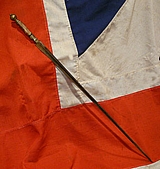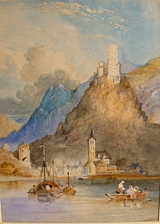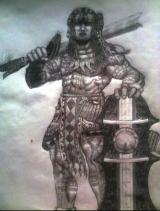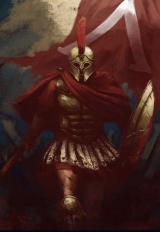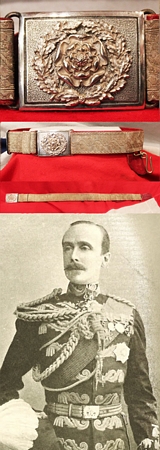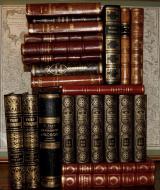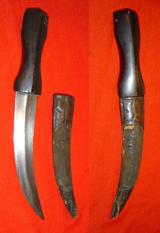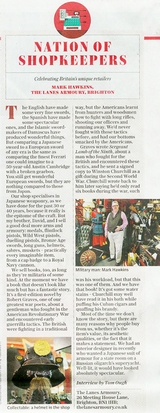Antique Arms & Militaria
A King George IIIrd Late 18th Century English Fowling Musket By Smith
For the exponent of gentlemanly pursuits. Fine walnut stock, percussion action converted from flintlock in the 1840's, steel furniture with pineapple form trigger guard finial and rear scroll. Hook breech quick release barrel with barrel key attachment. Good condition for age, fine working action. Small very old pitting area on barrel near breech, very slight scuff mark on stock at reverse of lock plate area. Throughout much of its history, hunting in England was an activity of the upper class. Legally, only land owners could hunt in England and the vast majority of the land was in large estates owned by the wealthy. To reduce poaching, the right of a person to own a gun was greatly restricted unless he was a landowner. Thus, ownership of a gun was not even a choice for the average British citizens. Moreover, deer hunting was further restricted to the royalty and generally carried out on horseback with dogs.
The wealthy British sportsmen of the Eighteenth and Nineteenth Centuries were primarily interested in hunting various types of birds. Most of their arms were designed for wing shooting. Rifles were considered an oddity. In the book titled British Field Sports; William Henry Scott (1818) the author described rifle shooting as a ?nice and curious branch of gunnery.? Scott goes on to state that "Rifles ? were little known among us, in the first American War, when people were amused on this side of the water by the story of an American woodsman, who had actually shot an eagle with his rifle, when it was?out of sight, a thing by no means impossible."
Colonel Peter Hawker, one of the most prolific British hunters of the early nineteenth century, maintained detailed diaries relating to his hunting activities. Over the course of many seasons, Hawker shot more than ten thousand birds and other small game. Over the same period of time, Hawker harvested only three deer. Colonel Hawker records that the first time he ever fired a rifle was in June of 1813 (at the age of 27) in anticipation of shooting a deer which had been causing crop damage. (Colonel Hawker's Diary at page 74). As with all our antique guns no license is required as they are all unrestricted antique collectables read more
650.00 GBP
An 18th Long, Boot or Cloak Sword
Cast brass hilt with relief figural decoration, and hawthorn wood grip. Steel rapier blade with engraving and deep fuller. Circa 1750. The knuckle bow and guard have been purposefully removed and the hilt re-attached. We had one quite similar, around 20 years ago, which came with an old article from a Connoisseur journal, It described, what was called, a boot or cloak sword. In the days of the threat by highwaymen, when a gentleman may have the need to consistently travel from town to town on horseback, but not by mail coach, a constant traveler might adapt a sword that could be easily slotted into knee high riding boots, or slipped into an especially constructed sleeve inside a riding cloak. For in wet and inclement weather a gentleman's flintlock pistol could not function, so without a sword for protection he was dangerously defenseless. Naturally a standard rapier short sword would be more normal, but on occasion, a gentleman that traveled constantly, or journeyed on perilous pursuits [such as a revenue man] might require a more concealable sword that would be far more easily manageable on both horseback or on foot. It also has the unique advantage of being eminently useable as a short distance spear type weapon, as it's weight balance is now very effective for that alternate purpose. 29.75 inches long overall read more
295.00 GBP
Beautiful European Topographic Watercolour of A Castle on The Rhine 19th C.
In the British romantic landscape style, beautifully executed with fine skill, not far removed in quality by the greatest exponant of the art of watercolours, Joseph Mallord Willam Turner who is said laid the foundation for Impressionism. This is a beautiful Victorian English School watercolour, superbly executed. It is titled but unsigned, possibly by William Callow 1812-1908
Callow was a landscape, architectural and marine artist. He taught in Paris and was appointed drawing master to the family of Louis Phillippe who was King of France between 1830 and 1848. Callow was elected to the Royal Soc. of Painters in Water Colours in 1848. 7 X 9.5 inches, Frame 18.25 x 15.25 inches read more
675.00 GBP
A Very Scarce French Chassepot Rifle Musketoon Modele 1866 Colonial Inlay
Last used by the French Colonial Spahi in WW1. The scarce French Army Musketoon model, St Etienne. Converted to the Gras system in 1874. Used from the Franco Prussian war right throught WW1 by the French Colonial Spahi. This rifle was laterly renamed the 1866-74 after it was converted to the Gras system. Then in the latter part of its working life this rifle has been transferred to the French colonial troops, the famous Spahi, and over decoratedby them with typical Spahi flamboyant inlays at the butt. We show photos of a French Curassier using his 1866 Chassepot musketoon in the Franco Prussian War, French Infantry using their Chassepot, and the French Colonial Spahi using the 1866-74 musketoon into WW1.
Spahis were light cavalry regiments of the French army recruited primarily from the indigenous populations of Algeria, Tunisia and Morocco. The modern French Army retains one regiment of Spahis as an armoured unit, with personnel now recruited in mainland France. Senegal also maintains a mounted unit with spahi origins as a presidential escort: the Red Guard.he spahi regiments saw extensive service in the French conquest of Algeria, in the Franco-Prussian War, in Tonkin towards the end of the Sino-French War (1885), in the occupation of Morocco and Syria, and in both World Wars. A detachment of Spahis served as the personal escort of Marshal Jacques Leroy de Saint Arnaud in the Crimean War and were photographed there by Roger Fenton. A contingent of Spahis also participated in the North China campaign of 1860. During the Franco-Prussian War of 1870-71 one detached squadrons of Spahis formed part of the forces defending Paris, while a provisional regiment comprising three squadrons was attached to the Army of the Loire.[2] A serious rising against French rule in Algeria during 1871?72 was sparked off by the mutiny of a squadron of Spahis who had been ordered to France to reinforce those units already there. Pahis were sent to France at the outbreak of war in August 1914. They saw service during the opening period of mobile warfare but inevitably their role diminished with the advent of trench warfare. During World War I the number of units increased with the creation of Moroccan Spahi regiments and the expansion of the Algerian arm. By 1918 there were seven Spahi regiments then in existence, all having seen service on the Western Front, in addition a detached squadron had served in Palestine against the Ottoman Empire. 11mm calibre, .20+ inch barrel. Obsolete antique no licence required. Its inventor was, Antoine Alphonse Chassepot, and it became the French service weapon in 1866. It was first used at the battlefield at Mentana, November 1867, where it inflicted severe losses on Garibaldi's troops. The event was reported at the French Parliament: "Les Chassepots ont fait merveille!", {The Chassepots did marvelous execution !} In the Franco-Prussian War (1870-1871) it proved greatly superior to the German Dreyse needle gun, outranging it by 2 to 1. Although it was a smaller caliber but the chassepot ammunition had more gunpowder and thus faster muzzle velocity. The Chassepots were responsible for most of the Prussian and other German casualties during the conflict. Small Gras cartridge adaption bolt head lacking. As with all our antique guns no license is required as they are all unrestricted antique collectables read more
895.00 GBP
A Good and Scarce Antique Malaysian Kampilan Sword
A rare tribal sword, somewhat crude but superbly effective in the terrain and jungles of the Philippines. The standard kampilan is a type of single-edged long sword, used in the Philippine islands of Mindanao, Visayas, and Luzon. This unusual variant has a long 33.5 inch double edged blade more reminiscant of a European broadsword, more similar to the sword of Datu Lapu-Lapu, legendary warrior Philippine king of the Mactan
The kampilan has a distinct profile, with the tapered blade being much broader and thinner at the point than at its base, sometimes with a protruding spikelet along the flat side of the tip and a bifurcated hilt which is believed to represent a mythical creature's open mouth.
The Maguindanao and the Maranao of mainland Mindanao preferred this weapon as opposed to the Tausug of Sulu who favoured the barung. The Kapampangan name of the Kampilan was "Talibong" and the hilt on the Talibong represented the dragon Naga, however the creature represented varies between different ethnic groups. Its use by the Illocanos have also been seen in various ancient records.
A notable wielder of the kampilan was Datu Lapu-Lapu (the king of Mactan) and his warriors, who defeated the Spaniards and killed Portuguese explorer Ferdinand Magellan at the Battle of Mactan on April 27, 1521.
The mention of the kampilan in ancient Filipino epics originating from other non-Muslim areas such as the Hiligaynon Hinilawod and the Ilocano Biag ni Lam-Ang is possible evidence for the sword's widespread usage throughout the archipelago during the ancient times. Today, the kampilan is portrayed in Filipino art and ancient tradition. The hilt is quite long in order to counterbalance the weight and length of the blade and is made of hardwood. As with the blade, the design of the hilt's profile is relatively consistent from blade to blade, combining to make the kampilan an effective combat weapon.
The complete tang of the kampilan disappears into a crossguard, which is often decoratively carved in an okir (geometric or flowing) pattern.The guard prevents the enemy's weapon from sliding all the way down the blade onto bearer's hand and also prevents the bearer's hand from sliding onto the blade while thrusting.
The most distinctive design element of the hilt is the Pommel, which is shaped to represent a creature's wide open mouth. The represented creature varies from sword to sword depending on the culture. Sometimes it is a real animal such as a monitor lizard or a crocodile, but more often the animal depicted is mythical, with the naga and the bakonawa being popular designs. Some kampilan also have animal or human hair tassels attached to the hilt as a form of decoration. read more
465.00 GBP
Wonderous Pieces Added Every Day & There is Probably Nowhere Else In The World You Can View Such Fabulous Wonders Where Everything Is For Sale
Under one roof, from an Original, Huge, WW2 Shell from A German King Tiger Tank, to an Original Imperial Roman Legionary’s Gladius, to a Museum Quality Samurai Sword by on of the great makers of early Japan. These past two weeks we have added and are still adding, original, ancient classical edged weapons, from Rome, Carthage, Persia, Greece, and Scandinavia, from fine English collection/s [acquired in the 1990’s or before] including; a 2000 year old gladius from the time of Julius Caesar to Augustus to Nero. A museum grade 1000+ year old Viking chieftain [king] or earl’s [jarl] sword inlaid with knotwork silver inlay. A bronze and iron Archemeanid sword from the time of the Greco-Persian wars of Xerxes the Great against the Spartans at Thermopylae. An Imperial Roman 1st century ring, the type as worn by the Imperial Pretorian Guard with the symbol of a lion, from the time of the Emperors Augustus, Tiberius, Caligula, Claudius and Nero. A superb 3rd to 4th century BC Falcata sword similar to the Greek Kopis, the sword used by Hannibal’s army in the 2nd Punic War and his invasion of Rome across the Alps, and a 3rd Century Imperial Roman Sword, from the time of Emperor Constantine and the Battle of Cibalae. Plus a remarkable 1066 period Original Norman Iron Four Plate Helmet, [as Seen Depicted in the world famous so-called Bayeux Tapestry] & two early Books, one, an original 5th century Roman treatise on Roman warfare, and 18th Century biography on 18th century Warfare. Plus, as usual, many more pieces of historical interest. read more
Price
on
Request
A Superb English Lord-Lieutenant's Silver Belt and Silver Lace Bullion Belt
Victorian. The silver buckle bears a centrally mounted English rose motif with an oakleaf and acorn wreath surrounding. A red Morocco leather lined belt which is covered in pure silver silver lace brocade bullion, in the continued design of the highest rank oak leaf and acorn scrolling vine, representing the monarch's personal representative, the Lord Lieutenant.
The Lord-Lieutenant is the British monarch's personal representative in each county of the United Kingdom. Historically, the Lord-Lieutenant was responsible for organising the county's militia. Lieutenants were first appointed to a number of English counties by King Henry VIII in the 1540s, when the military functions of the sheriff were handed over to him. He raised and was responsible for the efficiency of the local militia units of the county, and afterwards of the yeomanry, and volunteers. He was commander of these forces, whose officers he appointed. These commissions were originally of temporary duration, and only when the situation required the local militia to be specially supervised and well prepared; often where invasion by Scotland or France might be expected.
Lieutenancies soon became more organised, probably in the reign of his successor King Edward VI, their establishment being approved by the English parliament in 1550. However, it was not until the threat of invasion by the forces of Spain in 1585 that lieutenants were appointed to all counties and counties corporate and became in effect permanent. Although some counties were left without lieutenants during the 1590s, following the defeat of the Spanish Armada, the office continued to exist, and was retained by King James I even after the end of the Anglo-Spanish War.
The office was abolished under the Commonwealth, but was re-established following the Restoration under the City of London Militia Act 1662, which declared that:
The King's most Excellent Majesty, his Heirs and Successors, shall and may from Time to Time, as Occasion shall require, issue forth several Commissions of Lieutenancy to such Persons as his Majesty, his Heirs and Successors, shall think fit to be his Majesty's Lieutenants for the several and respective Counties, Cities and Places of England and Dominion of Wales, and Town of Berwick upon Tweed.
Although not explicitly stated, from that date lieutenants were appointed to "counties at large", with their jurisdiction including the counties corporate within the parent county. For example, lieutenants of Devon in the seventeenth and eighteenth centuries appointed deputy lieutenants to the City of Exeter, and were sometimes described as the "Lieutenant of Devon and Exeter" The origin of this anomaly may have lain in the former palatine status of Pembrokeshire.
The City of London was uniquely given a commission of lieutenancy, and was exempt from the authority of the lieutenant of Middlesex. The Constable of the Tower of London and the Warden of the Cinque Ports were ex-officio lieutenants for the Tower Hamlets and Cinque Ports respectively, which were treated as counties in legislation regarding lieutenancy and militia affairs.
The official title of the office at this time was His or Her Majesty's "Lieutenant for the county of ..", but as almost all office-holders were Peers of the realm, they were referred to as "Lord-Lieutenant". read more
385.00 GBP
Thousands of Books, 1st Editions & Hardback Books of Military Interest
Our book gallery on this site generally only shows our first additions or books of great rarity by famous 19th or 20th century authors, or of special interest, such incunabula or illuminated manuscripts, as well signed volumes and books bearing autographs of famous military or aeronautical heroes.
However, we also have thousands of books that we never list due to their quantity, based on military history, military biographies, or tomes on combat history of warfare. Our list is far too numerous to mention so please feel free to visit us to view our selection or contact us and we will see if we have a particular volume you are seeking. read more
Price
on
Request
A Late 18th Early 19th Century Horn Hilt 'Tiger's Claw' Blade Jambiya
With a carved solid horn hilt, double edged blade and brass mounted leather scabbard.18th-19th century.. A centrally ribbed wide blade known as the tiger's claw. The blade is a little proud of the scabbard at the base. read more
200.00 GBP
A Feature on The Lanes Armoury in the London Daily Telegraph
Celebrating Britain's Unique Retailers; A most kind review of Mark Hawkins and The Lanes Armoury by Tom Ough of the Daily Telegraph. See a scan of the article, as it appeared in the Daily Telegraph, in the gallery. This other review was completed earlier this year; Mark Hawkins celebrates 50 th year at The Lanes Armoury this year [2021].The story so far of the Hawkins Brothers and "The Lanes Armoury" written and updated by Frank Taylor; Sadly it is likely the last, true, original 'armoury' shop left in the whole of Britain. They were described as one of the most highly recommended visitors attractions in the whole of the UK by the New York Times. It is also regularly featured by many other world wide publications, appearing in too many television programmes to list, including Italian and Japanese documentaries, plus the Discovery Channels "Mud Men", and Ian McShane's world famous tv series, "Lovejoy". Several film locations have been filmed in their shops, including Graham Greene's " Brighton Rock", and Roger Moore's film series "The Persuaders", way back in 1971. Hundreds of thousands of tourists [and regular visitors] come to see them every single year, including in the 1970's President Ronald Reagan, and in October 1970 Elizabeth Taylor with Richard Burton also visited [and it was during that extraodinary visit Elizabeth Taylor sold to Camilla, {Mark and David's mother}, her bespoke diamond and ruby encrusted Rolex watch]. Also in the 1960's Edward G. Robinson visited, and H.M. Queen Elizabeth and HRH Prince Philip came through the Lanes, and their store in the 1980's, as did the HRH the Aga Khan. The 'Hawkins brothers' evolved their company from one of the oldest established family businesses in Sussex, with a client base that includes museums, heads of state, presidents, princes and kings. But whether you are a movie star, a head of state or a student, all will be treated with the same courtesy and respect. Every sale is important to them, albeit a £5 badge, a £500 sword, a £50,000 medieval book, or maybe a Gothic suit of armour for £40,000. Every day they are told that to some, this is their favourite shop in the world, with some foreign visitors returning year in year out for 40 years or even more, so they truly believe they have a great responsibility to their customers, their reputation, and to the amazing city of Brighton. Their oldest customer has incredibly been a regular buyer, for an amazing, over 75 years. The partners, Mark and David regularly appear on the BBC and numerous UK TV channels on various antique 'discovery' programs, and act as consultant appraisers. During Mark's 48 years, and David's 36 years [that's over 80 years combined] with the family business, it is estimated they have had pass through their hands, and appraised, possibly more items than any other living dealers in the country, and their breadth of knowledge and experience is simply astonishing. While in his capacity as export director of the old family company Mark was personally responsible for the sale and export of over 2,000 individual antiques, armouryantiques and militaria items every single week for nearly ten years. Shipping their treasures to the four corners of globe. Of course, these days [and for the past 30 years] the brothers are concentrating their attention to being England's leading specialist arms and militaria dealers, limiting their business to fine, ancient, antique or vintage samurai weaponry, armour, militaria and historical books, covering the past three millennia. It is now said they are the largest samurai weapon dealers in the western world, and this website is the largest of it's type in the world including over 17,0000 full colour photographs of some of their items for sale.
With so many different histories to offer, you can feel freer in Brighton than in most British cities to select trips which coincide with your interests and of course, you're much more likely to find in Brighton things to do which bring the history you love to life. For the lover of militaria, a visit to The Lanes Armoury is a must with a difference. The Armoury's housed in a three-storey 16th century building and is a real treasure trove, it's a museum which is not a museum as everything is for sale. It has been nominated and then short-listed for the British Antique & Collectors Awards as the best Antique Shop in Great Britain and is the latest incarnation of a much older business David Hawkins [Brighton] Ltd which was one of the earliest and largest dealers in Antiques and Collectibles within the whole of Europe in the last century. It's their current specialisation in Arms, Armour, Militaria, and Books which really marks them out and creates such a fascinating and fantastic place to visit. From bronze-age swords, axes and daggers, suits of samurai and European armour, muskets, revolvers, duelling pistols, American civil war swords, right through to medals and World War II militaria, it's all there to be viewed and drooled over. For example, they have in stock at present a 19th century 'Vampyre Killing Kit', [near identical to one in the Tower Collection] essential for those Victorian trips to the Carpathian mountains and Transylvania, and last year had a signed 1st Edition book that once personally belonged to Winston Churchill detailing a story of combat in the American Revolutionary War. It was presented to him during WW2 and signed by it's author, Robert Graves, one of England's greatest WW1 poets and novelists. It was declared by Churchill, in a personal letter to Robert Graves thanking him for the gift, that it was one of only 6 or 7 novels that he had read during his premiership in the war, and subsequently this very book was used by him to advise the creation and modus operandi of the new British Commandos. They have two pages in a folio from one of the earliest printed books, and a Ist Ed, book of 1479 By Bartolomaeus Platina, and just recently in, an Autographed copy of Christmas Carol by Charles Dickens at just under £25,000 [now sold]. It's not a museum, although often believed to be, and when you leave, you've really have had the same experience! I can honestly say the experience of a visit to the armoury, although not a vast premises by any means, in fact probably the smallest recommended by the New York Times, but is utterly memorable, and every single person that passed through their doors while I was there was either astonished, amazed, or both! But remember, although it looks and feels like a museum, as the brothers reminded me, everything is for sale!.... read more
Price
on
Request



